Chinese New Year, also known as Lunar New Year or Spring Festival, is one of the most important traditional festivals in China. Before Chinese New Year's Eve, Chinese people usually get back home to have a reunion dinner and enjoy Chinese New Year foods with their families. For the Chinese, food is not only a means to satisfy their appetites, but also a symbol of Chinese culture. If you are planning a tour to China during Chinese New Year, it is a good chance to try some traditional Chinese New Year foods. Here, we list the 12 most common Chinese New Year lucky foods and Chinese New Year food recipe ideas.
1. Fish
At New Year's Eve dinners in different parts of China, fish is an essential lucky food for Chinese New Year. Because “fish”(鱼) and “yu”(余) sound alike in Chinese, which means you have abundant things to spend every year. Eating fish during Chinese New Year means a prosperous life and wealth accumulation every year.
According to Chinese New Year food traditions, you can’t eat all the fish on New Year’s Eve, and you need to save some for the next day. Generally, you can only eat the body of the fish during the New Year's Eve dinner, and leave the head and tail of the fish until the first day of the Lunar New Year. This means that last year's harvest can carry over into next year. When placing fish on the table, you usually have to point the fish's head at the guest of honor or elders, which shows respect. And the head of the fish is often toward the head of the table.
Usually, the fish is cooked whole, which symbolizes wholeness and reunion. There are many ways to cook fish in China, such as braised, steamed, sweet and sour, etc. Each cooking method has its own unique and beautiful meaning. In the choice of fish species, carp, crucian carp, catfish, and chub are usually chosen. But no matter what kind of fish is chosen, it represents good fortune and wealth.
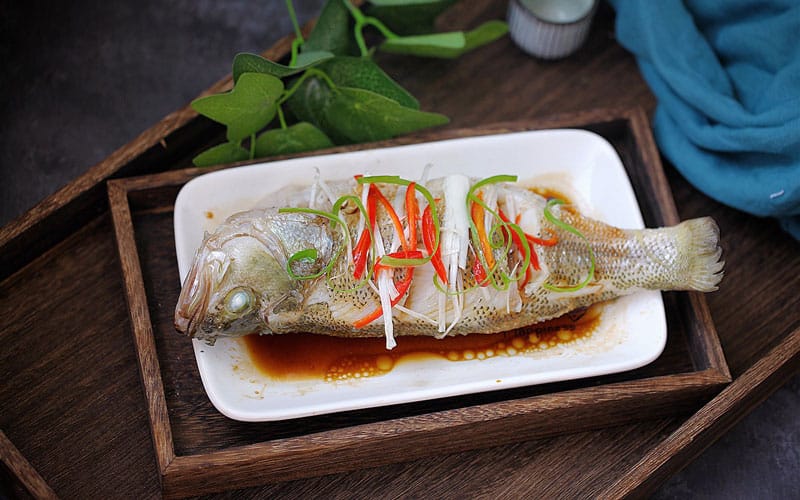
2. Chinese Dumplings
Dumpling (饺子, jiao zi) is another classic Chinese New Year food. In the north of China, dumpling is a lucky Chinese food for New Year’s Eve. Dumplings are also known as “jiaozi”, which means the change of the old and the new. Eating dumplings on New Year's Eve and New Year's Day marks the end of the old year and the beginning of the new one. It's also a fun thing for families to get together and make dumplings. Chinese families will make dumplings while chatting and sharing stories and joys of each other's year. This enhances the emotional communication between family members.
As one of the lucky dishes for Chinese New Year, the shape of the dumplings is similar to ancient gold and silver ingots, so eating dumplings symbolizes wealth and good luck. People will put coins, candies, or peanuts in some of the dumplings when they are wrapped. If you eat these special dumplings, this means that you will have good luck or things will go well for you in the new year.
Dumpling fillings can be varied, including meat, vegetables, seafood, etc. Dumplings stuffed with leeks represent being rich for a long time. Dumplings stuffed with cabbage and meat mean “all kinds of wealth.” Dumplings stuffed with celery mean hard work and prosperity.
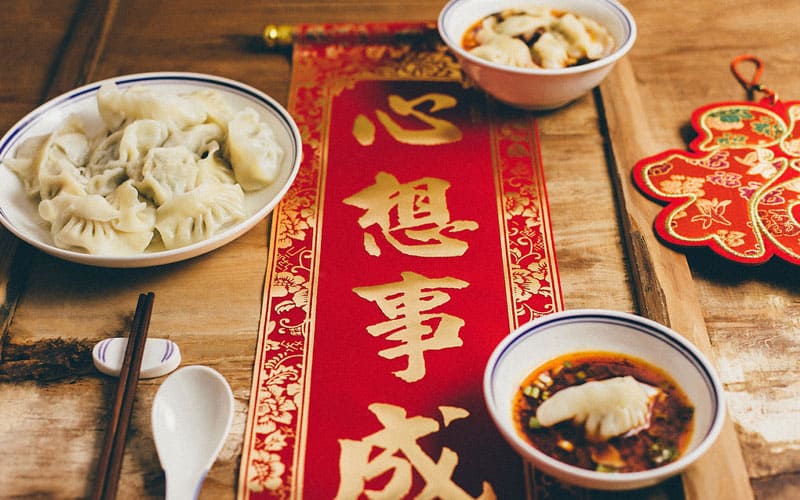
3. Spring Rolls
Spring roll is one of the foods eaten during Chinese New Year, which is popular in the southern part of China. Spring rolls, also known as spring pancakes. It is a snack with various fillings wrapped in a thin cake crust and deep-fried or steamed. People eat spring rolls instead of Chinese dumplings during Chinese New Year in some parts of southern China.
Chinese New Year is very close to the Beginning of Spring (li chun, 立春 in Chinese). The word “chun” (春) in the Chinese name for spring rolls represents spring, which means the coming of spring. Eating spring rolls on Chinese New Year means saying goodbye to the past year and welcoming the beginning of the new year.
The appearance of fried spring rolls is golden brown, which means wealth and auspiciousness. In traditional China culture, gold is regarded as the color of wealth. Spring rolls are long and shaped like gold bars, so eating spring rolls means the coming year is full of money. Spring roll fillings usually include a variety of vegetables and meats. These ingredients are believed to be auspicious. For example, cabbages represent all kinds of fortunes, pork means affluence, etc.
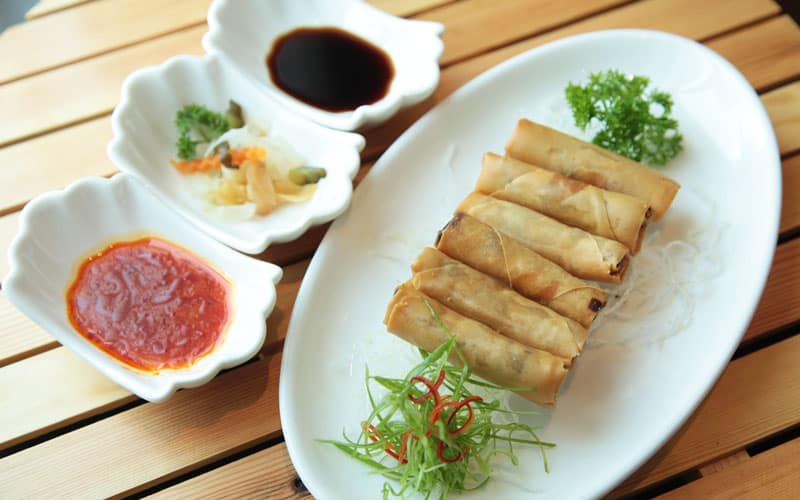
4. Longevity Noodles
Noodle is an auspicious food for Chinese New Year, which is especially common in the northern part of China. In Chinese culture, noodles usually represent longevity. Because in Chinese, noodles (面) and “绵” sound alike, and “绵” means long-lasting and continuous. In addition to birthdays, the Chinese eat a bowl of longevity noodles during Chinese New Year. It means wishing the family a long and healthy life.
In some areas, the noodles must be one or more long noodles. When eating noodles, it's best not to bite them off, because it means a shorter life. There is a saying in China: Eat dumplings on the first day of the lunar year and eat noodles on the second day. Usually, people will eat a bowl of noodles on the second day of the first lunar month, which means a smooth and long life in the coming year.
Noodles must be cooked in cold soup. Cook the noodles and soak them in cold water. You can add eggs, vegetables, and other ingredients, and then add a little soy sauce and salt to taste.
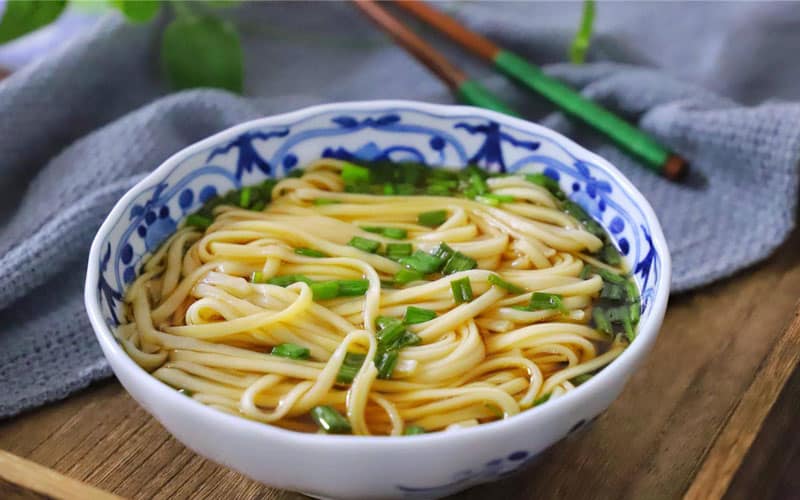
5. Niangao
Niangao (glutinous rice cake) is a Chinese New Year food and dessert. Niangao is mostly made of rice or glutinous rice. Glutinous rice is soaked in water and then ground into powder and pressed. Besides, Chinese people also add red dates, brown sugar, and other ingredients to Niangao, which means prosperity and sweetness. This food is not only popular in taste, but also rich in good wishes. Niangao has three colors, red, yellow, and white, symbolizing gold and silver. Rice cakes are steamed over high heat and symbolize being thriving.
In Chinese, the name “Niangao” harmonizes with the word “high. It means you are promoted to a higher position every year. And it means the kids get taller every year. People eat rice cakes during Chinese New Year in anticipation of a successful year of work, a promotion, or greater career achievements.
During Chinese New Year, it is a custom to eat rice cakes in many parts of China. But there are differences between the North and the South. Some are sweet and some are salty. Tianjin's rice cakes are often topped with crushed candied fruit and fruit ingredients. There are also stuffed rice cakes, and mostly sweet fillings, such as bean paste, jujube paste, and hawthorn. But Shanghai’s rice cakes often add lard, osmanthus sugar, rose sugar, and so on.
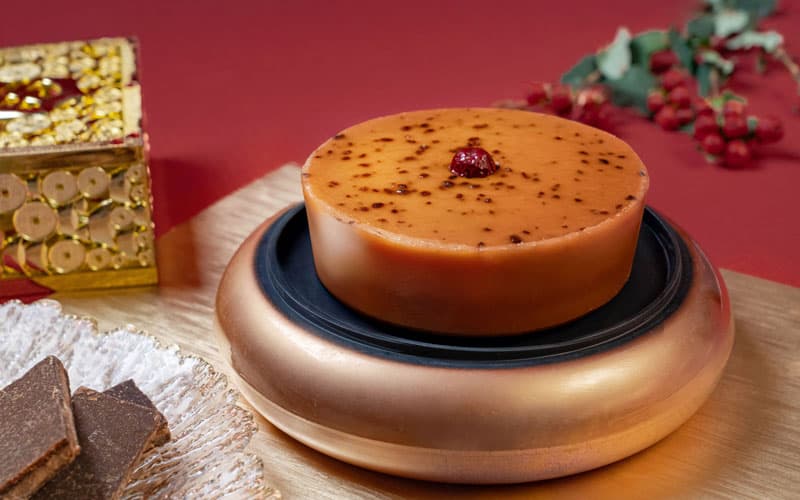
6. Fruits
During Chinese New Year, it is particularly about the rules of putting fruit at home or sending fruit to relatives and friends. Some fruits are very popular during Chinese New Year food because of their auspicious meanings in Chinese.
Kumquats, with their golden color and similar pronunciation to the word “good luck”, become rich in the auspicious meaning of the fruit. In addition, Chinese people will buy a pot of kumquat trees for home decoration, which means great luck. People also hang small lanterns and red envelopes on kumquat trees, which can further add to the festive atmosphere.
The word "orange" (橙) in Chinese is homophonic with the word "Cheng" (成), which means that everything comes true in the coming year. In Chinese, the word “苹” for apple has the same sound as the word “平” for peace. Therefore, apples are often given the symbol of peace in China. During Chinese New Year, Chinese people put red apples at home and hope that the family can be safe and healthy in the new year.
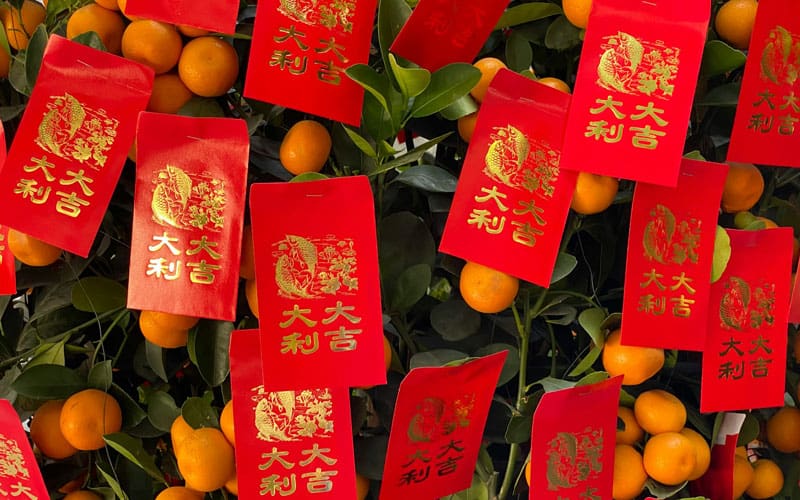
7. Yuanxiao & Tangyuan
Yuanxiao and Tangyuan are symbolic foods for Chinese New Year, especially during the Lantern Festival. Yuanxiao and tangyuan are similar in appearance, but differ in the making process and ingredients. Both Yuanxiao and Tangyuan represent reunion and wholeness. Eating Yuanxiao symbolizes a family reunion and a happy life.
Soup Yuanxiao and Tangyuan are usually made of glutinous rice. In practice, Yuanxiao is rolled out by cutting the filling into small pieces, dipping them in water, and placing them into baskets with dry glutinous rice flour. The skin of Yuanxiao is dry and fluffy. Tangyuan is made by mixing glutinous rice flour into dough, taking a small piece and pressing it into a round, wrapping the filling, and rolling it into a ball. Tangyuan has smooth, sticky skin. In the selection of fillings, Yuanxiao tastes sweet, filled with black sesame and bean paste. But Tangyuan flavors include sweet, savory, meat, and vegetarian or fruit fillings. Tangyuan is usually cooked. Besides being boiled, Yuanxiao can also be fried.
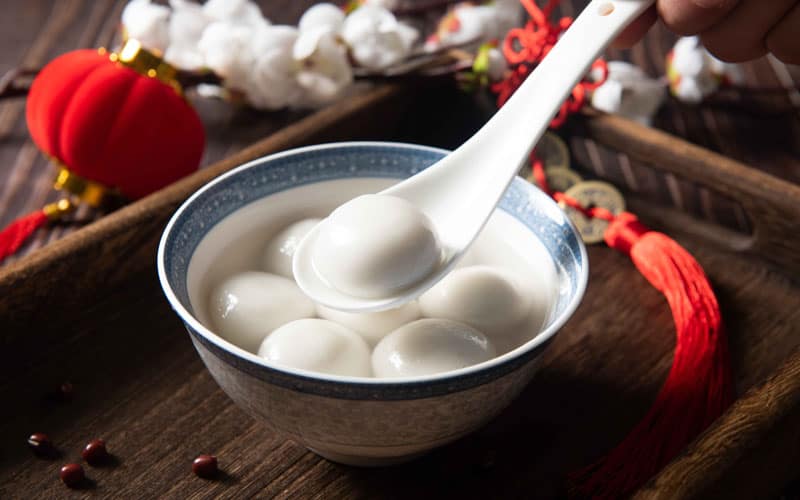
8. Chicken
Steamed Chicken is a Chinese Lunar New Year food. In some parts of China, it is customary to kill chickens and ducks during the Chinese New Year. Chicken (鸡) is homophonic with "ji" (吉) in Chinese, which means auspiciousness. Therefore, chicken at the New Year's Eve dinner has become an essential dish for ringing out the old year and ringing in the new year. Different regions have different ways of eating chicken during Chinese New Year, such as white-cut chicken in Guangdong, stir-fried spicy chicken in Sichuan, roasted chicken in Shandong, and so on.
In some parts of China, the chicken at the New Year's Eve dinner must be a whole chicken, because older people may abstain from serving half a chicken or cubed chicken. Many families will choose whole chicken as a dish, which symbolizes completeness and completeness and means that the family is neat and full of life. Chicken wings symbolize spreading wings and soaring to great heights. Chinese people hope they can be even more successful in the coming year.
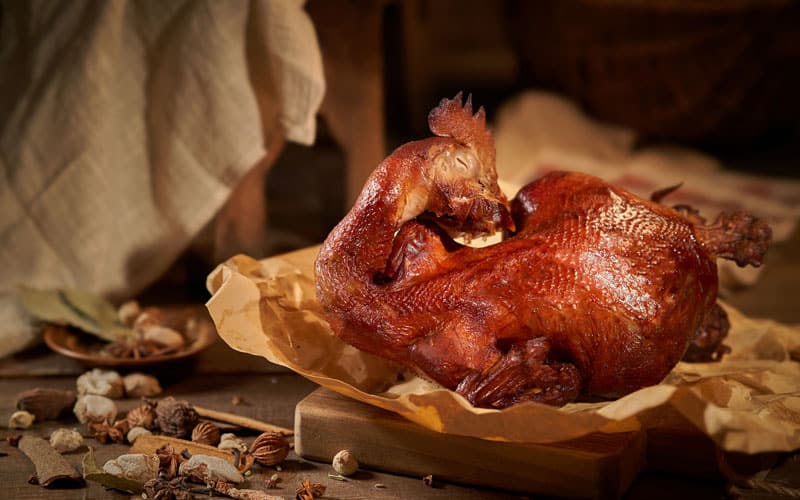
9. Vegetables
Vegetables are an essential part of the dinners during Chinese New Year. On the one hand, it is because of the rich nutrition of vegetables. On the other hand, it is because of the auspicious symbol of vegetables.
For example, cabbage is a symbol of wealth and auspiciousness. There are many ways to cook cabbage. It can be stir-fried, served cold, or used as a filling. Lettuce (生菜) sounds similar to the word “sheng cai” (生财) in Chinese, which stands for “good fortune” and signifies a prosperous new year. Lotus root is a good blessing for the couple. And eating lotus root during Chinese New Year also has the meaning of good luck.
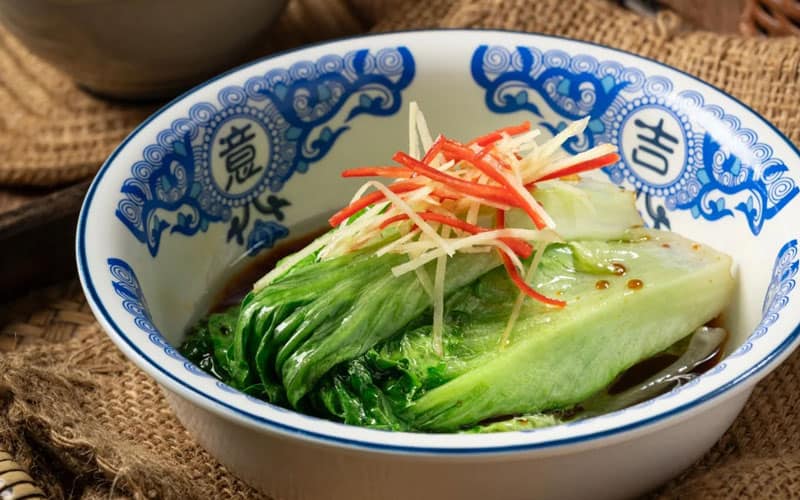
10. Cured Meat
Cured meat is meat that has been cured with salt or sauce and then allowed them dry in a well-ventilated place. Because it takes a long time to cure and dry, it usually needs to be prepared ahead of time. On the day before there were refrigerators, Chinese people made cured meat and sausage during the twelfth lunar month (the final month of the Chinese calendar) for easy preservation of meat. Cured and air-dried meat may keep longer without spoiling.
Cured meat represents a good harvest and happiness in traditional Chinese culture. Cured meat is usually made from the meat of livestock such as pork, beef, or lamb. These livestock are the fruit of the farmers' hard work. During Chinese New Year, Many families hang sausages and cured meat to symbolize good luck and happiness.
Cured meat be cooked in a variety of ways, including steaming, boiling, stir-frying, etc. Common dishes related to cured meat are steamed cured meat, stir-fried cured meat with garlic sprouts, etc.
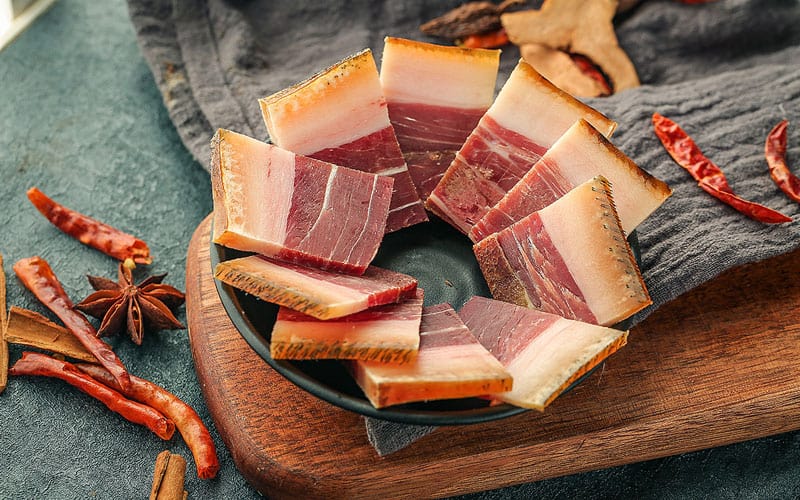
11. Candy Tray
The Chinese New Year candy tray is a common Chinese New Year food and a home decoration during the Chinese New Year. The candy trays usually contain a variety of candies, nuts, dried fruits, and other snack foods, including peanuts, melon seeds, red dates, pistachios, candy, chocolate, preserved fruit, etc. In addition to the snacks, you can also add some decorations such as small red lanterns, gold dollars, and paper-cut works.
In ancient China, candy trays were also called packed boxes. The pronunciation of the word "攒 (cuan)" is similar to that of the word "全 (quan)". It means perfection. Sweet candies symbolize the happiness and sweetness of life. The candy tray is usually placed on the tea table in the living room. People use candy trays to greet visiting friends or to savor when they gather with family for conversation and entertainment.

12. Lion's Head Meatballs
Lion's head meatball (狮子头, shi zi tou) is a Chinese New Year food during the Chinese New Year. Lion's head meatball is also known as Sixi balls, which means fortune, wealth, longevity, and happiness. It is a type of meatball made from pork and seasoned. The lion's head meatball is named for its shap,e which resembles a lion's head.
In Chinese culture, the lion is regarded as an auspicious animal, symbolizing courage and strength. Eating a lion's head during the Chinese New Year means the reunion of family and a happy life.
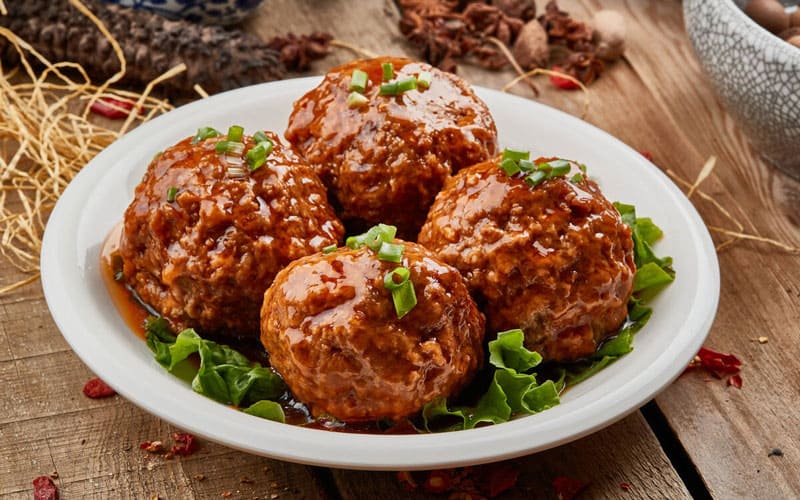
Plan a Chinese New Year Tour to China
If you want to truly understand the enchantment of the Chinese New Year, enjoying a China tour during the Chinese New Year festival is a great idea. We can take you to experience the authentic Chinese New Year atmosphere in China and taste all kinds of Chinese New Year foods, blending with fantastic natural landscapes and rich cultural immersion. Feel free to contact us and customize a Chinese New Year trip to suit your interests and budget.
More about Chinese New Year
Chinese New Year (When, How Long, Traditions, Superstitions)

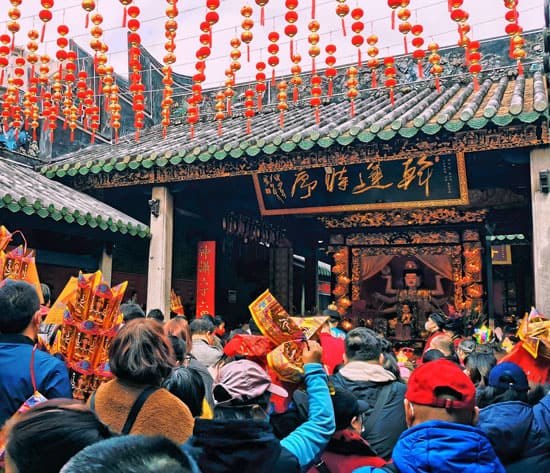
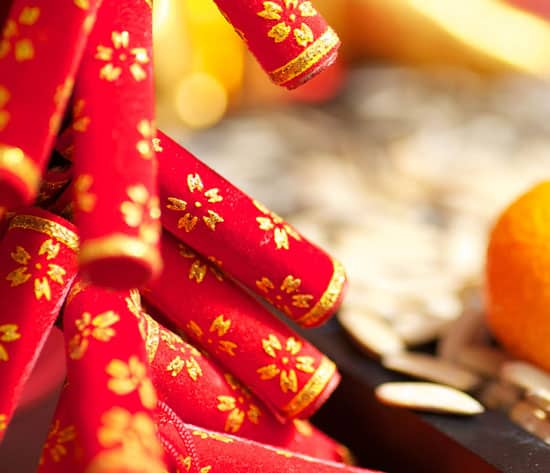
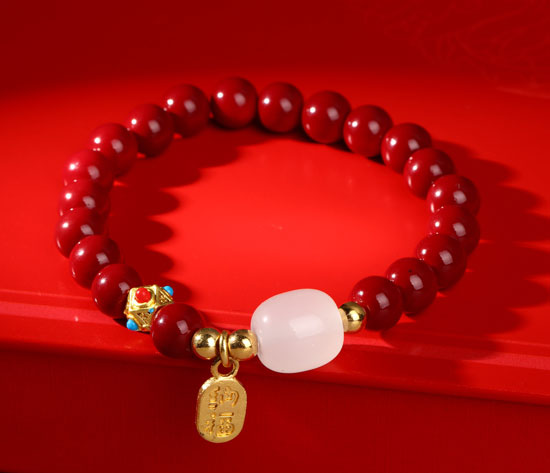

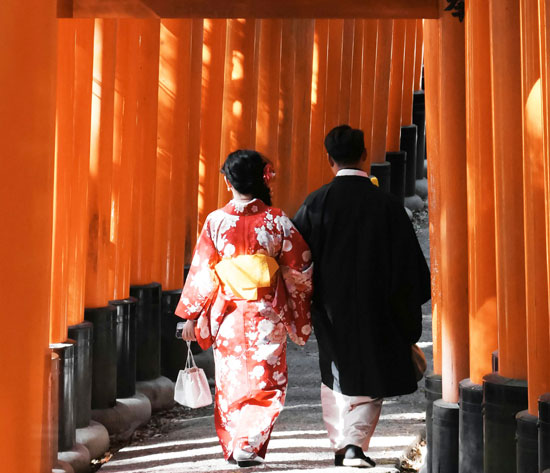
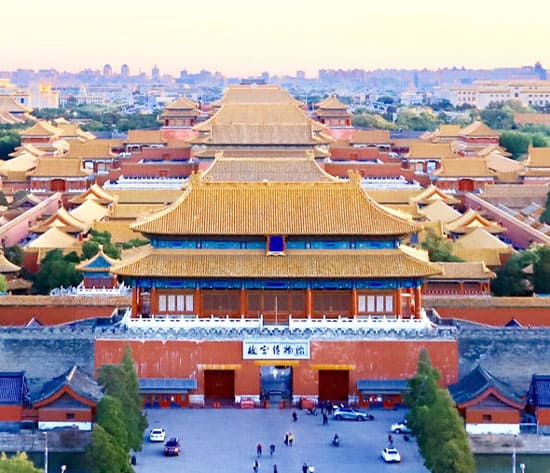
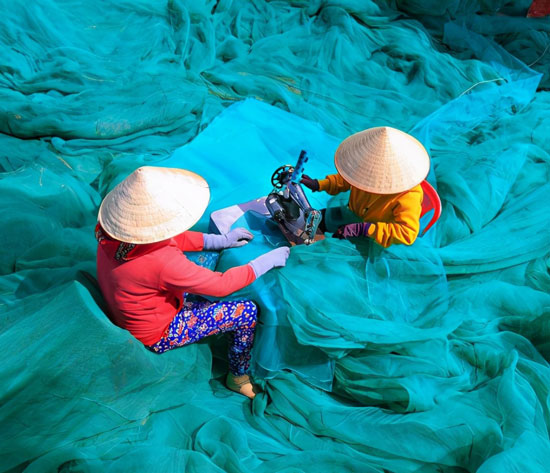

Have a Question?
You might see your comment appear on this page, but your email address and full name will not be published. Your personal information will remain confidential. Our Asia travel experts will get back to you as soon as possible. Required fields are marked *